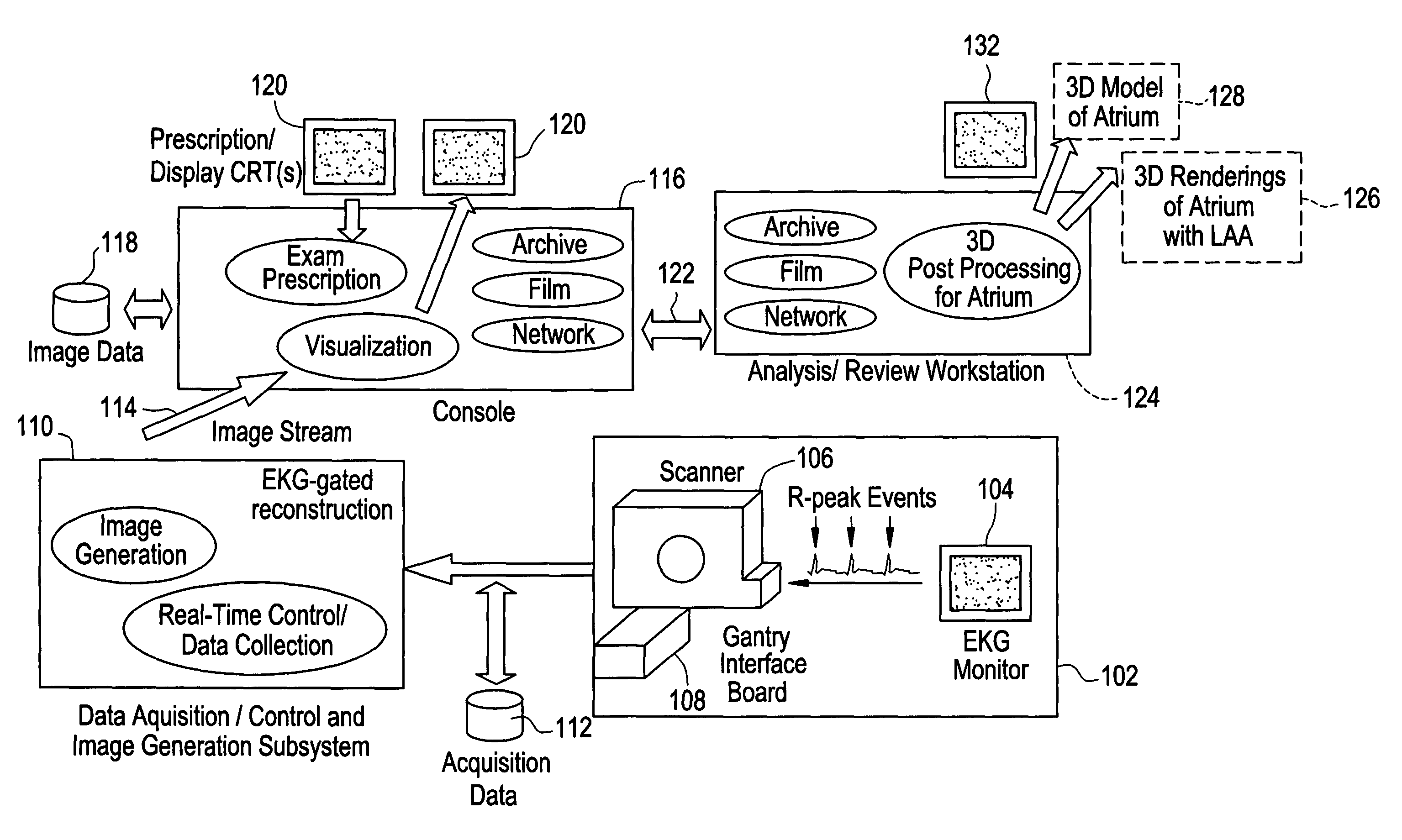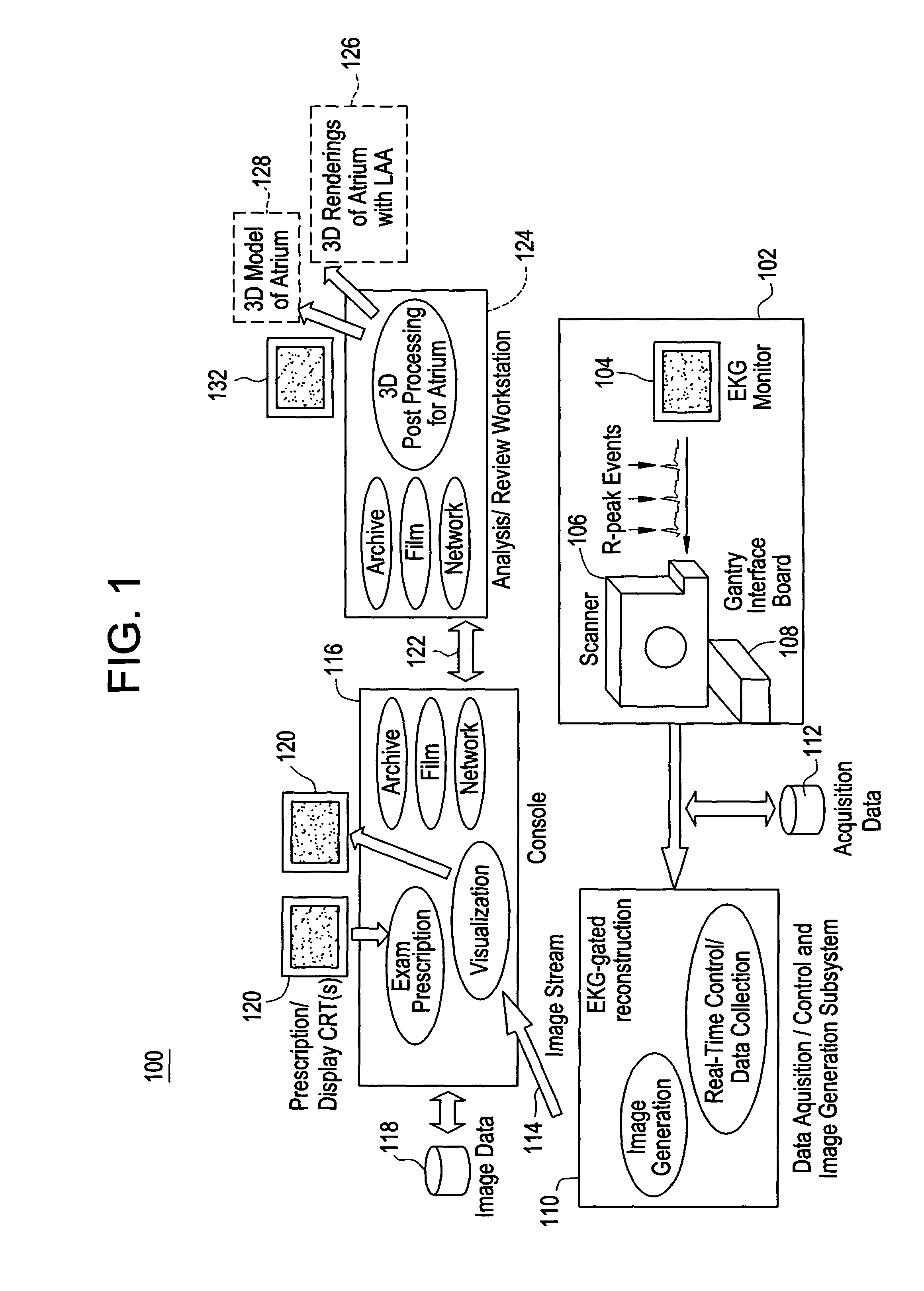Cardiac CT system and method for planning left atrial appendage isolation
a technology of ct and imaging system, applied in the field of cardiac implant systems, can solve the problems of high stroke risk of patients with a
- Summary
- Abstract
- Description
- Claims
- Application Information
AI Technical Summary
Benefits of technology
Problems solved by technology
Method used
Image
Examples
Embodiment Construction
[0013]Disclosed herein is a cardiac computed tomography (CT) system and method for LAA isolation / occlusion that provides information for planning interventional procedures that enable an electrophysiologist, cardiologist and / or surgeon to plan in advance a desired approach to take for the procedure. Additionally, with a more detailed three-dimensional (3D) geometrical representation of the LM, as may be obtained from imaging modalities such as CT, magnetic resonance (MR) and ultrasound, the practitioner can identify the orientation, size and any anomalies of the LM. Thus, a device or implant of the correct size may be selected during planning so as to avoid the problem of incorrectly sized implants encountered with this procedure. The 3D images obtained may also be used to plan for isolation of LAA from outside (i.e., epicardially).
[0014]Although the exemplary embodiments illustrated hereinafter are described in the context of a CT imaging system, it will be appreciated that other i...
PUM
 Login to View More
Login to View More Abstract
Description
Claims
Application Information
 Login to View More
Login to View More - R&D
- Intellectual Property
- Life Sciences
- Materials
- Tech Scout
- Unparalleled Data Quality
- Higher Quality Content
- 60% Fewer Hallucinations
Browse by: Latest US Patents, China's latest patents, Technical Efficacy Thesaurus, Application Domain, Technology Topic, Popular Technical Reports.
© 2025 PatSnap. All rights reserved.Legal|Privacy policy|Modern Slavery Act Transparency Statement|Sitemap|About US| Contact US: help@patsnap.com



